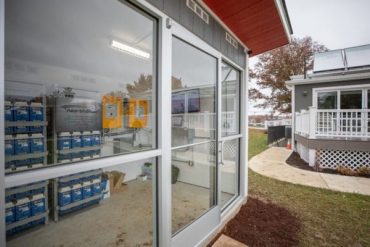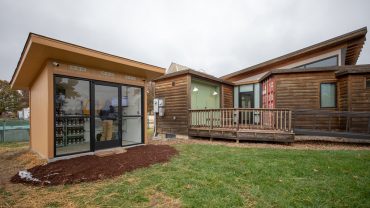
Lead batteries may be a 160-year-old proven technology, but their unlocked potential is drawing new interest from college student young scientists. That includes Julian Kosacki, who is completing his Ph.D. in Materials Science and Engineering at Missouri University of Science and Technology (Missouri S&T), Rolla, Mo.
His research was just awarded funding from the U.S. Department of Energy. DOE’s Basic Energy Science (BES) office granted Kosacki a graduate scholarship to support his advanced research into developing the next generation of innovative lead batteries at Argonne National Laboratory. He will begin his year-long project in October 2020.

The Challenge: Increase Energy Density
The key challenge facing lead batteries is how to increase their energy density by improving the efficient use of materials, without premature failure triggered by the various processes that are always present during battery operation. Kosacki’s work will delve into these processes that occur on the positive electrode active material (PAM) in the battery.
“Calculations show lead batteries have a lot of potential, but for whatever reason, they’re sitting at maybe a 40- to 50-percent efficiency level,” Kosacki explained. “We’re taking a step back to understand details that might have been missed before, to build the battery step-by-step from the very beginning. It’s an exciting work that can open a clear path forward to make the battery better for both automotive and certainly for grid storage applications.”
The Project: A Deeper Dive into Lead Battery Technology
Specifically, Kosacki will investigate, at atomic and molecular levels, the electrochemical interfaces in the positive electrode of the lead battery. The goal: Achieve a deeper understanding of lead battery technology to unlock its potential to help meet the nation’s growing energy storage needs. The BES Office of Science Graduate Student Research (SCGSR) is underwriting the project. It is the second of two awards issued under a program started in 2019.
“The opportunity given to Julian through the SCGSR is unique and very important for the development and training of the next generation of scientists and engineers working on our nation’s energy and resource technologies,” said Dr. Pietro Papa Lopes. He is one of Argonne’s staff scientists working on the Lead Battery Science Research Program (LBSRP) under a Cooperative Research and Development Agreement (CRADA) with U.S. lead battery manufacturers and suppliers.
“We are very pleased to have Julian join us for this important work in achieving a better understanding of how lead batteries function and how they can be made more efficient and durable,” Dr. Papa Lopes added. The CRADA is completing the second of a three-year program that is already yielding important data about battery fundamentals. Dr. Papa-Lopes will mentor the work to be carried out by Kosacki.
The Site: Argonne National Laboratory
Kosacki will join 11 other doctoral candidates assigned to work at Chicago’s Argonne National Laboratory in different areas of science and engineering. He is among 62 graduate students throughout the U.S. chosen to develop their doctoral thesis research programs across the national labs complex.
“The resources and expertise [at Argonne National Laboratory] will be incredibly supportive for my project and long-term for the ambitions of the lead battery industry. I hope to come back with some spectacular results after my project,” said Kosacki. He is particularly excited to work with Argonne’s Advanced Photon Sources (APS). “It allows us to observe and collect data in-situ without having to stop everything and take the battery apart.”
This award is especially relevant, given a 2017 report issued by DOE on basic research needs. It highlighted a gap in planning for the next generation of energy storage and the need for increased research in lead battery technology.
Research in Progress: Missouri S&T Eco Village
In addition to Kosacki, there are other Missouri S&T scientists and college students currently studying lead batteries.
In 2018, members of the lead battery industry joined a collaborative research alliance, called the Missouri S&T Microgrid Industrial Consortium, for a three-year study of advanced lead battery microgrids at the Missouri S&T EcoVillage. The microgrids are powering two existing on-campus solar homes designed by students as part of DOE’s biennial Solar Decathlon.
In what is considered a first of its kind, students reside in the “living laboratories.” The uniquely immersive experience is allowing students to study in real time the applications of renewable energy sources and storage for future communities.
Ultimately, the alliance aims to unlock the ability to supply reliable and environmentally sustainable energy to the residential market by using advanced lead battery solar microgrid systems.
Missouri is Lead Battery Leader
Missouri is particularly interested in lead battery technology. The state is second in the U.S. in terms of lead battery industry employment, revenue and number of companies, according to Chris Neaville. He is asset development director for The Doe Run Company, a founding member of the Missouri S&T Microgrid Industrial Consortium.
“Our company has long supported the type of lead battery innovation that Julian will be researching,” Neaville said. “We have had the pleasure to help support his progress and research at Missouri S&T these last few years through the Consortium, and look forward to learning more from this research.”
For further details, go to solar micro-grid homes.






